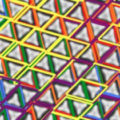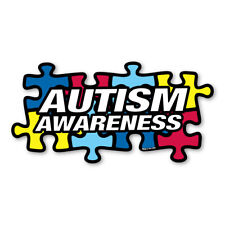
US medical researchers have published their list of the top 10 chemicals believed to be implicated in autism and other neurodevelopmental disorders.
Compiled by medicos from the Mount Sinai School of Medicine and published in the journal Environmental Health Perspectives, the report also calls for increased research to identify other suspect environmental toxins and the role they might play in the development of autism disorders.
It’s estimated that a small percentage of autism spectrum disorders (ASD) and Attention Deficit Hyperactivity Disorders (ADHD) are caused by toxic exposures in the environment and 25 percent are caused by interactions between environmental factors and genetics.
However, the precise environmental triggers are not understood. While genetic research has demonstrated that ASD and certain other neurodevelopmental disorders have a strong hereditary component, many believe that environmental causes may also play a role. ASD and ADHD disorders affect between 400,000 and 600,000 of the 4 million children born in the United States each year.
- Lead
Old, deteriorating lead paint is a major source of lead exposure. Lead can also be ingested through fruits and vegetables contaminated by high levels of lead in the soils they were grown in (usually from residual emissions from leaded gasoline). - Methylmercury
Fish and other aquatic species are the only significant source of human methylmercury exposure. - PCBs
Exposure to PCBs occurs through breathing in contaminated air, consuming contaminated food, and by skin contact with old electrical equipment that contain PCBs. - Organophosphate pesticides
Commonly used organophosphates have included parathion, malathion, methyl parathion, chlorpyrifos and fenitrothion. Malathion is widely used in agriculture, residential landscaping, public recreation areas, and in public health pest control programs. In the US, it is the most commonly used organophosphate insecticide. - Organochlorine pesticides
Although many countries have phased out the use of organochlorides, residues continue to be found in humans and mammals across the planet many years after production and use have been limited. - Endocrine disruptors
These compounds are fat soluble, accumulating from the environment in the fatty tissue of animals we eat, but recent studies suggest that contaminated house dust, rather than food, may be the major source of these toxins. - Automotive exhaust
- Polycyclic aromatic hydrocarbons
Produced as byproducts of fuel burning, they are also found in food cooked at high temperatures. - Brominated flame retardants
Found in electronics, clothes and furniture, they are commonly used as a means of reducing the flammability of the product. - Perfluorinated compounds
Used in diverse applications to make materials stain, oil, and water resistant.
“A large number of the chemicals in widest use have not undergone even minimal assessment of potential toxicity and this is of great concern,” says report co-author Philip Landrigan, of the Mount Sinai School of Medicine. “Knowledge of environmental causes of neurodevelopmental disorders is critically important because they are potentially preventable.”
Related:
Discuss this article in our forum
Oxytocin Touted As Autism Treatment
IT-rich region revealed to be autism hotspot
Autism’s facial characteristics revealed


















Comments are closed.